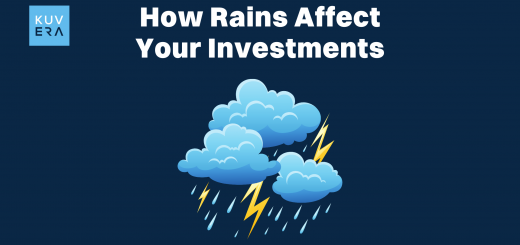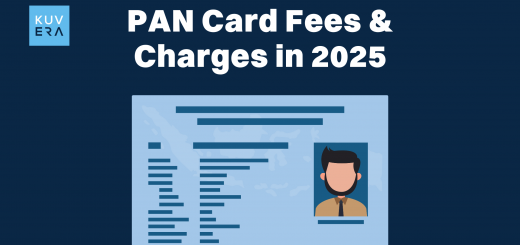Money granted by banks to businesses as loans are sometimes not repaid by the borrowers. Loans that are past due or not being repaid are known as Non-Performing Assets (NPA). They are referred to as “bad assets” as well. The Reserve Bank of India (RBI) oversees the whole banking system in India. According to the RBI, a loan account is considered to be a non-performing asset if the interest or payment amount is past due for a period of more than 90 days.
What Is A Non-Performing Asset?
NPA stands for Non Performing Assets. The term “NPA” refers to loans made by Indian banks and other operational financial institutions, the interest and principal amounts of which have been past due for an extended period of time. Like any other business, banks should be profitable as well, yet NPA eats away a sizable percentage of the banks’ margin.
Any financial system’s foundation is the banking industry. An economy’s overall health is ensured by the banking sector’s efficient operation. In the process of accepting deposits and lending, banks create credit. The money obtained from the borrowers in the form of interest payments and principal repayments is recycled for resource development. The accumulation of non-performing assets (NPAs), however, obstructs this credit flow. It restricts credit expansion and has an impact on banks’ financial health. NPAs are the leading indicators to judge the performance of the banking sector.
Banks mostly rely on interest from advances and loans as well as principal payments for their income. When such assets fail to generate income, then they are classified as non-performing assets (NPA). The Reserve Bank of India defines an NPA as a credit facility for which interest and/or a principal instalment have been “past due” for a predetermined amount of time. The asset is typically categorized as a non-performing asset if loan payments have not been made for 90 days. Banks are required to classify Non Performing Assets into one of the following categories based on the length of time the asset has been nonperforming:
- Sub-standard Assets: A substandard asset is one which has been NPA (there has been a default in the loan for more than 90 days) for less than or equal to 12 months. Such an asset will have clearly identified credit vulnerabilities that put the debt’s ability to be repaid in jeopardy and are characterized by the high possibility that the banks will suffer a loss if the flaws are not fixed.
- Doubtful Assets: An asset will be categorized as doubtful if it has stayed in the substandard category for a year. A loan rated as doubtful possesses all the faults inherent in assets classed as substandard plus the additional characteristic that the weaknesses make collection or liquidation in full, – on the basis of currently known facts conditions, and values, highly improbable and problematic.
- Loss Assets: An asset is considered to be a loss asset if a loss has been identified but not fully written off by the bank, internal or external auditors, or an RBI examination. In other words, such an asset is deemed uncollectible and of such low value that its retention as a bankable asset is not justified, despite the possibility of salvage or recovery value.
The creation of bad loans on bank balance sheets is detrimental to the banking industry since it affects the size and stability of the balance sheet. Additionally, there is a negative effect on the rate of return on assets. Profitability is decreased since a sizable portion of profits must be set aside for doubtful and bad loans. Even worse, NPA accounts are burdening banks with rising carrying costs that could have been put to more profitable use.
The financial institutions also desire to maintain a certain capital adequacy level to strengthen their net worth. Even while this problem is detrimental to the banking sector, it has become more clear recently that the banking industry has suffered significantly as a result of this issue. The RBI has been implementing initiatives to tackle the NPA problem.
For the purpose of resolving NPAs, some legal remedies have been adopted, including Debt Recovery Tribunals (DRTs), Lok Adalats, the Securitization and Reconstruction of Financial Assets, and Enforcement of Security Interest Act, 2002 (SARFAESI Act), and the Insolvency and Bankruptcy Code, 2016. Other actions taken by the RBI include the recapitalization of public sector banks and the creation of verticals for the management of stressed assets.
Gross NPA And Net NPA
- Gross NPA:
Gross NPA is the total number of loans that have gone into default. It consists of all nonstandard assets, such as sub-standard, doubtful, and loss assets. Gross NPA is a nonstandard asset for which the bank has made provisions and which is still held in the banks’ books of account.
- Net NPA:
Net NPAs are those advances that are obtained after deducting the provisions from Gross NPA. The Net NPA ratio reveals the actual financial burden of the banks.
Causes Of Non Performing Assets
The primary source of income for a bank is the interest it earns on the loans. When a bank loans money, they expose themselves to credit risk. It indicates that there is a possibility that the borrower will be unable to repay the loan. If a loan’s repayment is overdue by more than 90 days, it is categorized as an NPA.
Prior to the financial crisis of 2008, India’s economy was thriving. Banks made huge loans to businesses during this time in the hope that the good times would last. However, the recession in the global economy following the financial crisis had a negative impact on the businesses of most companies.
The halt of mining projects and the delay in obtaining environmental permits had an impact on the iron and steel and power industries, adding to the volatility of raw material prices. All of these issues had a significant impact on the profits of the companies. Their capacity to repay debts was impacted by low earnings. This is among the most significant causes of the rise in NPA at public sector banks.
The ease of lending requirements for companies was a significant contributor to the rise in NPA. Their credit history and financial situation weren’t appropriately analyzed.
The banks were willing to accept higher leverage and less promoter equity. Additionally, banks were marketing unsecured loans in order to remain competitive, which added to the high levels of NPAs. The majority of credit distributed to industries is provided by public sector banks, and a sizable share of NPA comes from this distribution of credit.
SBI gave a huge loan to Kingfisher Airlines during its financial difficulties, which the company is unable to repay. The priority sector lending (PSL) industry has made a major contribution to NPAs. Agriculture, education, housing, and MSMEs are among the priority industries.
There are also instances of loan defaults by promoters in which funds were transferred by over-invoicing imports sourced through a promoter-owned subsidiary abroad or exporting to shell companies and then claiming default. Although there are multiple factors affecting the rise of NPAs in the country, a few of them are as follows:
External Factors
- Recovery tribunals: The government has established a number of recovery tribunals that are tasked with recovering loans and advances. However, because of a lack of effectiveness, banks suffer the consequences of non-recovery, which lowers their profitability and liquidity.
- Industrial sickness: As a result of improper project management, poor management, a lack of sufficient resources, a lack of advanced technology, and regular policy changes by the government, businesses suffer from industrial sickness, which lowers loan recovery rates and decreases profit and liquidity for the banks that finance those sectors.
- Natural disasters: This is the determining element that is causing an alarming rise in public sector bank Non-Performing Assets. Since farmers depend mostly on rainfall for crop production, inconsistencies in the rainfall prevent them from reaching the output level and make it impossible for them to make loan repayments. So the banks have to make a large number of provisions in order to manage those loans.
Internal Factors:
- Defective lending process: Banks generally follow three guiding principles when making loans: the guiding principles of safety, liquidity, and profitability. The principle of safety means that the borrower is in a position to pay back the loan. Therefore, the banker should take the utmost care to ensure that the venture or business for which a loan is requested is a sound one and that the borrower is competent to carry it out successfully.
- Inappropriate analysis: Inappropriate business analysis is another factor contributing to the rise in Non-Performing Assets. Therefore, while financing a project, the bank should consider the project’s profitability, viability, and long-term acceptability.
- Credit appraisal system: Due to a faulty credit evaluation procedure, the bank provides loans to people who are unable to repay them. Because of this, there was a rise in the bank’s Non-Performing Assets. Therefore, the bank must maintain a proper system for credit evaluation.
- Management: To protect its interests, the banks should always choose borrowers with great care The banks should adhere to the principle of risk diversification, which means they shouldn’t give out loans to just a few large companies or concentrate them on just a few towns or industries.
As Non-Performing Assets cease to generate income for banks, their net interest income will decrease. Bank NPAs have an impact on banks’ liquidity, which results in a mismatch between assets and liquidity and forces the banks to raise resources at a high cost.
Recovery Mechanism
A recovery mechanism may refer to the completion of the recovery procedures and mechanisms required to revive the financial assets in the event that the borrower fails to repay. According to the definition given above, a Non-Performing Asset is an asset that no longer generates income or returns and, if it is not handled correctly and promptly, is detrimental to the bank. As a result, the recovery of NPAs is essential for maintaining the banking system. Recovery is primarily completed through the following factors:
- Lok Adalats: Lok Adalats is one of the government-established channels for resolving disputes. It serves as a venue for the amicable resolution of legal issues and cases that are pending in court or in the preliminary stages of litigation. Lok Adalats are given statutory status under the Legal Services Authorities Act, 1987. According to the aforementioned Act, the Lok Adalat decision is regarded as a final and binding judgment of a civil court and is not subject to review in any court of law.
Even though there is no mechanism for an appeal against such a bequest, if the parties are unsatisfied with Lok Adalat’s decision, they may still start a lawsuit by going to the appropriate court, making a claim, and going through the appropriate steps to exercise their legal right to sue.
- Debt Recovery Tribunals (DRTs): The Recovery of Debts and Bankruptcy Act, 1993 (RDB Act) provides provisions for a speedy remedy to lenders and borrowers through the filing of Original Applications with the Debt Recovery Tribunals (DRTs) and appeals with the Debts Recovery Appellate Tribunals (DRATs). As a result, the DRTs and DRATs were established to help meet the need for quick resolution of Non Performing Assetss for banks.
The problem with the DRTs, like many other debt recovery mechanisms, is that they take a very long time to resolve open disputes, leading to an excessively high number of pending cases.
- Securitization and Reconstruction of Financial Assets and Enforcement of Securities Interest Act, 2002 (SARFAESI Act): The Securitization and Reconstruction of Monetary Assets and Enforcement of Interest Act, 2002, more often known as The SARFAESI Act was created in response to the recommendations made by government-appointed committees looking at the necessary legislative and financial sector reforms and changes for improved debt collection methods.
This Act’s primary goal is to expedite the recovery of defaulted loans and assist in easing the rising pressure on the banks brought on by the rise in NPAs. The act provides banks and financial institutions with a mechanism to increase asset recovery by permitting them to seize and sell securities to reduce the burden of Non-Performing Assets.
- Insolvency and Bankruptcy Code (IBC): Prior to the Insolvency and Bankruptcy Code of 2016, there were numerous laws and institutions with overlapping jurisdictions and functions, which caused a great deal of uncertainty when it came to handling insolvency and bankruptcy proceedings against both individuals and corporations.
In India, there was no legal structure that offered an effective approach to help in debt collection, which damaged banks and other financial organizations and restricted the flow of credit. In order to overcome these obstacles, the government introduced the Insolvency and Bankruptcy Code Bill in 2015. It was later passed and put into effect in 2016.
It offers a time-bound process to resolve insolvency. In the event of a default in repayment, creditors obtain control of the debtor’s assets and must make decisions regarding resolving insolvency. Under IBC, companies have 180 days to complete the whole insolvency process. If the creditors do not object to the extension, the deadline could be extended.
Conclusion
Non-Performing Assets have consistently been a major issue for Indian banks. It is an issue not only for the banks but also for the economy. Since Indian banks rely heavily on the interest income from loans, the money trapped in NPAs has a direct influence on the bank’s profitability.
In summary, the high incidence of NPA has a cascading effect on all significant financial ratios of the banks, including Net Interest Margin, Return on Assets, Profitability, Dividend Payout, Provision coverage ratio, etc., which may likely erode the value of all stakeholders, including shareholders, depositors, borrowers, employees, and the public at large.
Even though the government has taken a number of actions to lower NPAs, much more has to be done to address this issue. The bank must be proactive when choosing clients and consumers for loan approval. The recovery procedure needs to be expedited by the bank management. A stringent policy should be implemented in order to solve this issue. Significant efforts must be made in order to solve the NPA problem; otherwise, NPAs will continue to destroy bank profitability, which is a negative for the expanding Indian economy.
Interested in how we think about the markets?
Read more: Zen And The Art Of Investing
Watch/hear on YouTube:
Start investing through a platform that brings goal planning and investing to your fingertips. Visit Kuvera.in to discover Direct Plans and Fixed Deposits and start investing today.
#MutualFundSahiHai #KuveraSabseSahiHai!











